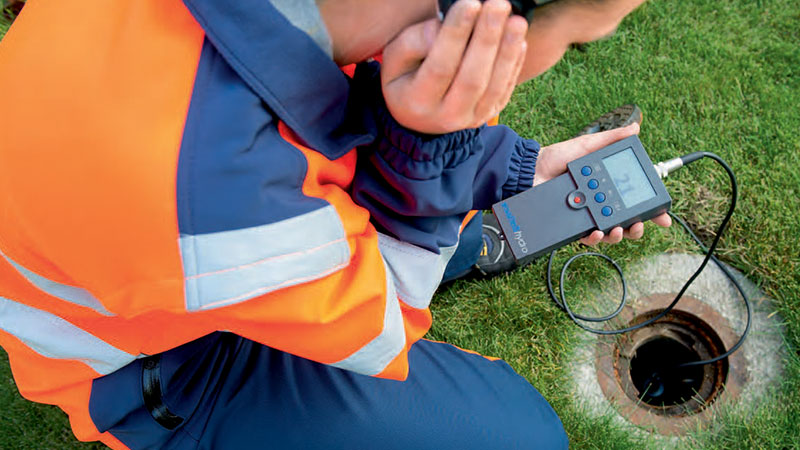Specialist Water Leak Detection Providers: Secure Your Home from Costly Damages
Specialist Water Leak Detection Providers: Secure Your Home from Costly Damages
Blog Article
Innovative Solutions for Early Detection of Water Leakages in Buildings and Facilities
From innovative leakage discovery technologies to the implementation of IoT sensing units for real-time surveillance, the landscape of leakage prevention is progressing quickly. Automated water circulation analysis systems are improving just how leaks are identified and resolved, paving the means for an aggressive approach to water leakage discovery.
Advanced Leakage Discovery Technologies
Advanced leak detection technologies, equipped with advanced sensing units and formulas, play a vital role in promptly determining and determining water leakages in numerous settings. These modern technologies employ a mix of acoustic, thermal, and electro-magnetic noticing methods to detect leakages precisely. Acoustic sensors discover the sound of leaving water, enabling specific localization of the leak resource. Thermal imaging detects temperature modifications caused by water leak, offering an additional effective technique for leakage identification. Electromagnetic sensors can determine adjustments in magnetic fields triggered by water, using yet an additional layer of leak discovery capability.

IoT Sensors for Real-Time Tracking
In the world of contemporary water leakage discovery, the integration of IoT sensing units for real-time monitoring stands for a pivotal innovation in enhancing positive leakage discovery capacities. These sensors provide constant tracking of water systems, offering real-time information on water circulation prices, pressure variants, and temperature changes. By leveraging IoT innovation, these sensors can identify even the tiniest abnormalities in water use patterns, allowing early recognition of potential leakages before they escalate into significant issues.
IoT sensing units transfer information to a central system, where advanced algorithms analyze the details and generate alerts or alerts when abnormalities are discovered. This real-time monitoring capability permits homeowner or center managers to promptly deal with leakages, minimizing water damage, decreasing repair service expenses, and saving water resources.
Furthermore, IoT sensing units can be incorporated with building administration systems, permitting computerized reactions to discovered leakages, such as shutting down water valves or activating pumps to alleviate the effect of leakages. On the whole, the execution of IoT sensors for real-time surveillance dramatically improves the effectiveness and performance of water leak detection in structures and infrastructure.
Maker Discovering Algorithms for Leak Prediction

One trick advantage of using equipment understanding for leakage prediction is its capacity to continuously find out and improve its accuracy with time. As more information is gathered and fed into the formula, it can improve its forecasts and adjust to changing conditions, eventually raising the reliability of leakage discovery systems.
In addition, artificial intelligence algorithms can aid in identifying subtle indications of leaks that may go undetected by conventional surveillance approaches. water leak detection. By analyzing intricate information embed in real-time, these algorithms can provide early warnings and alerts, enabling punctual intervention and preventive upkeep to minimize possible water damage and connected costs
Using Thermal Imaging for Leak Detection
Thermal imaging innovation offers a promising approach for address finding water leaks in various systems and infrastructures. By utilizing infrared radiation and temperature differences, thermal imaging cams can recognize covert leaks that are not quickly visible to the naked eye.
One of the key advantages of thermal imaging for leakage discovery is its non-intrusive nature. Generally, the usage of thermal imaging modern technology enhances the efficiency and accuracy of water leak detection, making it an important device for preserving the stability of buildings and infrastructures.
Automated Water Flow Analysis Systems
How can automated water flow evaluation systems revolutionize the discovery and administration of leaks in different systems and infrastructures? Automated water circulation analysis systems use a positive technique to leak detection by constantly checking water circulation prices and patterns. By establishing standard information, these systems can swiftly determine discrepancies that might indicate a leak, enabling punctual intervention to avoid extensive damage.
These systems utilize innovative algorithms to assess real-time data and provide immediate alerts when abnormalities are spotted, enabling quick activity to be taken. In addition, automated water circulation evaluation systems can be integrated with structure administration systems or IoT platforms, boosting general effectiveness and enabling remote monitoring capabilities.
Additionally, the information accumulated by these systems can be utilized for anticipating maintenance objectives, helping to determine prospective powerlessness in the facilities before leaks happen. Generally, the implementation of computerized water flow analysis systems can significantly enhance leakage discovery and administration methods, inevitably leading to cost right here savings, minimized click here for more water wastage, and boosted sustainability in structures and facilities.

Verdict
In conclusion, the combination of innovative leak detection technologies, IoT sensing units, machine knowing formulas, thermal imaging, and automatic water flow analysis systems uses ingenious solutions for very early detection of water leakages in structures and infrastructure. These technologies make it possible for real-time monitoring, forecast of leakages, and reliable discovery approaches to avoid water damage and wastefulness. Executing these solutions can aid in maintaining the honesty and sustainability of water supply in different setups.
Report this page